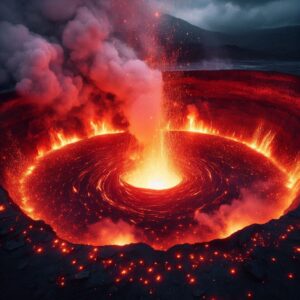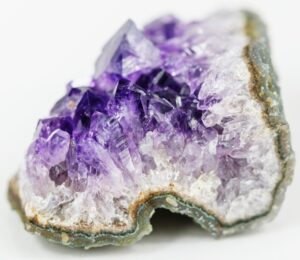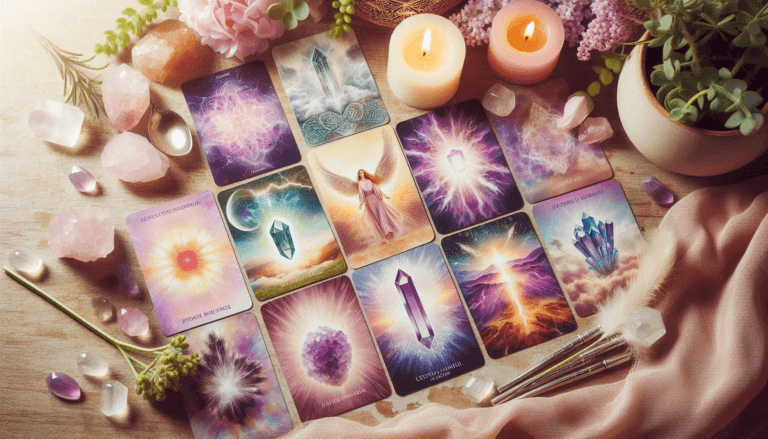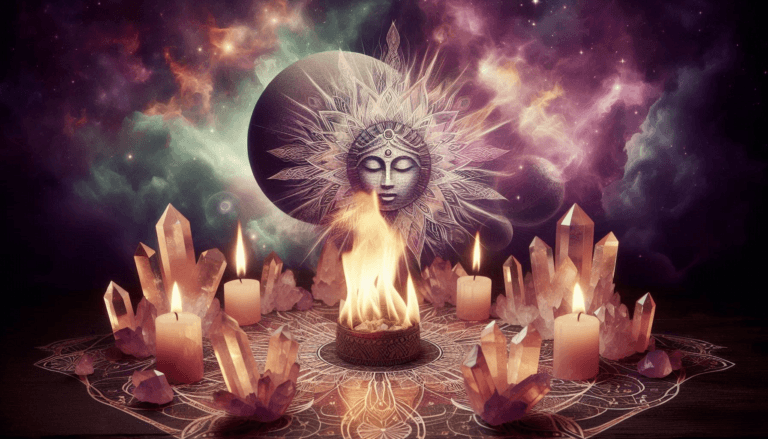What Are Crystals Made Of?
Crystals are solid substances composed of minerals, which are naturally occurring inorganic elements or compounds. Their unique structures are formed through a repeating pattern of atoms, molecules, or ions, giving them distinct shapes and properties.
Understanding the Basics of Crystals
Crystals are fascinating natural structures that have captivated human interest for centuries, not only for their beauty but also for their unique physical and metaphysical properties. To understand what crystals are made of, we need to dive into the basics of their composition and formation.

At the most fundamental level, crystals are made up of minerals. Minerals are naturally occurring, inorganic substances with a specific chemical composition and an orderly atomic structure. This means that the atoms, molecules, or ions that make up a mineral are arranged in a highly structured, repeating pattern. This structured arrangement is what gives crystals their characteristic geometric shapes and why they often form sharp edges and flat faces. For example, the well-known quartz crystal is composed of silicon dioxide (SiO2), which forms a distinct hexagonal shape as it crystallizes.
The Role of Elements and Compounds in Crystal Formation
Crystals are made up of various elements and compounds found in the Earth’s crust. The specific elements that combine to form a crystal depend on the type of crystal and the environment in which it forms. Common elements that contribute to crystal formation include silicon, oxygen, carbon, calcium, sodium, potassium, and magnesium. These elements combine to create different mineral compounds, which then crystallize into various types of crystals.

For example, in quartz, silicon and oxygen combine to form silicon dioxide, while in calcite, calcium, carbon, and oxygen come together to create calcium carbonate. The unique combination of these elements results in different types of crystals, each with its own set of physical properties, such as color, hardness, and transparency.
How Do Crystals Form?
Crystals form through a process called crystallization, which occurs when a liquid cools and starts to solidify, or when a gas transitions to a solid state.

This process can happen in several ways:
- Cooling of Magma or Lava: When molten rock (magma or lava) cools, the minerals within it begin to crystallize. The slower the cooling process, the larger the crystals that form. This is why some crystals, like those found in granite, can be quite large, while others, like those in basalt, are much smaller.
- Evaporation of Solutions: Crystals can also form from solutions when the liquid evaporates, leaving behind the mineral components. This is how crystals like halite (rock salt) form. As water evaporates from a saline solution, the salt crystals are left behind and begin to grow.
- Precipitation from Solutions: When the concentration of minerals in a solution becomes too high, the minerals can precipitate out and form crystals. This is a common process in caves, where stalactites and stalagmites form from mineral-rich water.
- Metamorphic Processes: Crystals can also form deep within the Earth’s crust through metamorphic processes, where existing minerals are subjected to high temperatures and pressures, causing them to recrystallize into new forms. This is how crystals like garnet and kyanite are formed.
The Influence of Environmental Conditions
The size, shape, and quality of a crystal are largely determined by the conditions under which it forms. Factors such as temperature, pressure, the concentration of minerals, and the presence of impurities all play a role in the final appearance of a crystal. For example, quartz crystals formed in high-temperature environments may develop different characteristics than those formed at lower temperatures. Similarly, the presence of trace elements can result in a wide range of colors, such as the presence of iron giving amethyst its purple hue.
Types of Crystals and Their Compositions
Different types of crystals are classified based on their chemical composition and the arrangement of their atoms.

Here are some common types of crystals and what they are made of:
- Quartz: Made of silicon dioxide (SiO2), quartz is one of the most abundant minerals on Earth and forms hexagonal crystals. It comes in various forms, including clear quartz, amethyst (purple quartz), citrine (yellow quartz), and rose quartz (pink quartz).
- Calcite: Composed of calcium carbonate (CaCO3), calcite forms in a variety of environments and is known for its double refraction property, where objects viewed through the crystal appear doubled.
- Halite: Also known as rock salt, halite is composed of sodium chloride (NaCl) and typically forms cubic crystals. It is commonly found in evaporite deposits from ancient seas and salt lakes.
- Fluorite: Made up of calcium fluoride (CaF2), fluorite forms cubic crystals and is known for its wide range of colors and its ability to fluoresce under ultraviolet light.
- Diamond: Composed entirely of carbon atoms arranged in a crystal lattice structure, diamonds are known for their exceptional hardness and clarity. They form under extreme heat and pressure conditions deep within the Earth’s mantle.
- Beryl: This mineral group includes crystals such as emerald and aquamarine, which are made of beryllium aluminum cyclosilicate. The presence of chromium or vanadium gives emeralds their green color, while aquamarines get their blue hue from iron impurities.
The Role of Crystals in Healing and Spiritual Practices
Beyond their physical composition and formation, crystals are appreciated for their metaphysical properties. Many believe that crystals have unique energies that can influence our physical, emotional, and spiritual well-being. For instance, amethyst is often used for its calming properties, while rose quartz is associated with love and emotional healing. Each crystal’s energy is thought to interact with the body’s energy centers, or chakras, to promote balance and healing.
Key Takeaways
- Crystals are made of minerals: These minerals have specific chemical compositions and structures, which determine their shape, color, and properties.
- Formation process: Crystals form through various natural processes, including the cooling of magma, evaporation of solutions, precipitation, and metamorphic processes.
- Types and composition: Different types of crystals, such as quartz, calcite, halite, and diamonds, have unique compositions that contribute to their distinctive properties.
- Environmental influence: The environment in which a crystal forms plays a significant role in its size, shape, and overall characteristics.
- Metaphysical properties: Many people use crystals for their believed healing and spiritual properties, with each crystal associated with different types of energy and intentions.
Understanding what crystals are made of gives us a deeper appreciation for these natural wonders and their potential benefits in both the physical and spiritual realms. Whether you’re drawn to them for their beauty or their energy, crystals continue to captivate and inspire us in many ways.







